Cocoa powder adds a deep chocolatey flavor to your favorite desserts, and a silky texture to hot or cold beverages. But if you're out, the best cocoa powder substitutes are dutch-processed cocoa and cacao powder.
This is because cocoa powder, cacao powder, baking cocoa, and dutch cocoa are all the same thing. Dutch-processing flattens the chocolate flavor, but they’re all made by pressing & removing fat from cacao beans, then grinding the leftover solids into a fine powder.
But if that's not an option, this article covers what to use instead of cocoa powder. Simply rummage in your pantry for baking chocolate, chocolate chips, a dark chocolate bar, or even an instant hot cocoa, and get ready to make your favorite treat.
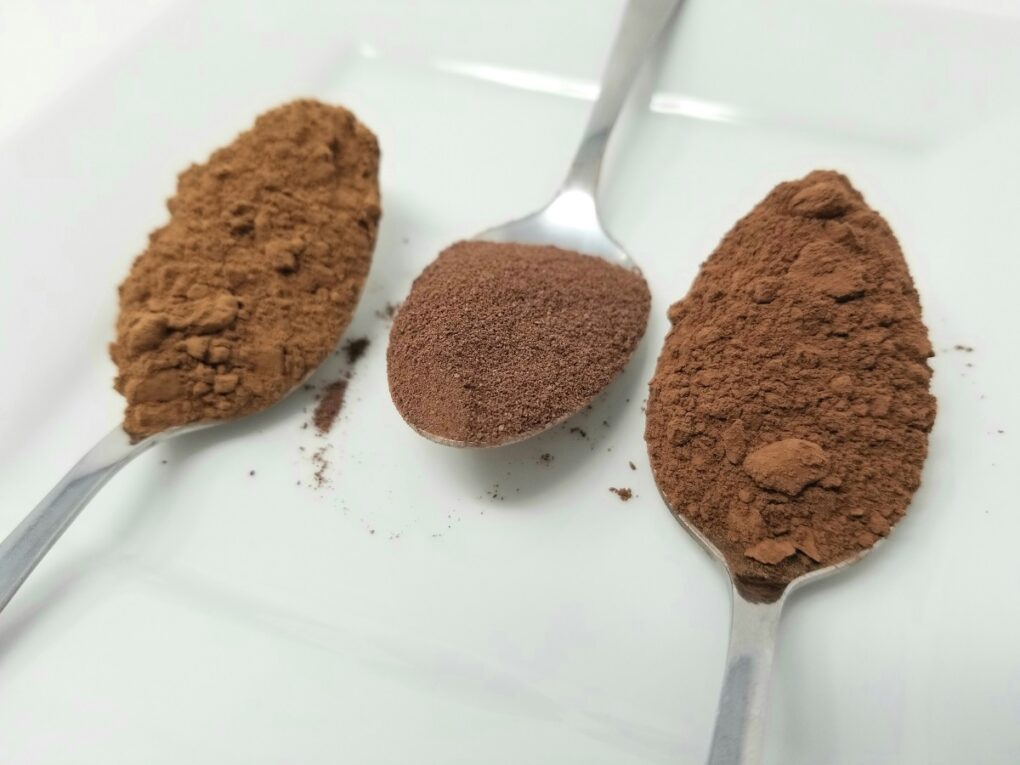
Jump to:
What is Cocoa Powder?
The highly concentrated, unsweetened chocolate product, cocoa powder, also known as chocolate powder or cacao powder, is made from roasted and ground cocoa beans that have been fermented and roasted.
Cocoa is thought to have been used heavily by the Mesoamerican peoples of Central America, and then introduced to Europe by the Spanish conquistadors in the 16th century. The beans are harvested and fermented, before being dried and then shipped to chocolate-making countries.
There they're lightly roasted to develop their chocolatey flavor before removing the shells. Grinding the roasted cocoa nibs produces a paste known as cocoa liquor or chocolate liquor.
When the liquid is pressed to remove roughly 75% of its cocoa butter, the remaining cocoa solids are processed to make cocoa powder, also called cacao powder or baking cocoa.
Because cocoa powder is derived from the cocoa bean itself through the process above, it contains antioxidants as well as incredible nutritional value. Pure cocoa powder is also lower in calories, fat, and sugar than chocolate off the shelf.
Cocoa powder is rich in the energy-boosting caffeine & theobromine, and is one of the best sources of polyphenols. These are antioxidants linked to a number of health advantages, such as greater blood flow, reduced inflammation, and protection from diseases such as cancer & diabetes.
Some cocoa powders have almost all of the cocoa butter removed, resulting in a powder that is primarily made up of finely ground solids. Others retain more of their cocoa butter, yielding a richer and fattier product (some retain as much as 25%).
Higher-quality cocoa powder retains slightly more cocoa butter than regular brands. The average grocery store brand of cocoa powder contains primarily cocoa solids, with only about 10-15% residual fat.
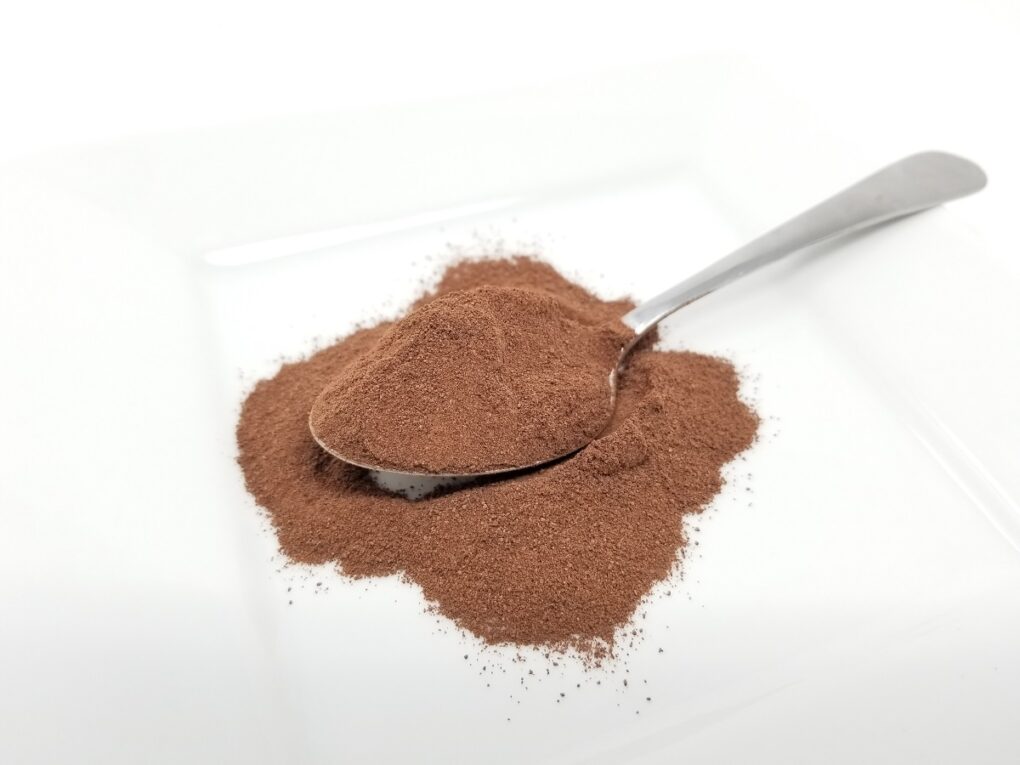
Types of Cocoa Powder
Cocoa powder can easily be found in the baking section of major grocery stores. There are typically a few to choose from, but at least in the US, all of them will be either dutch-processed or natural cocoa powders.
The main difference between the two is in the way they are processed, which results in varying levels of acidity and pH between the types. Cocoa beans are naturally acidic, with a pH level between 5 and 6.2.
Dutch-processed cocoa or alkalized cocoa powder has been treated with an alkaline solution to neutralize the acidity of the cocoa, raising the pH to between 6.8 and 8.1. To lessen the inherent acidity of lower-quality cacao beans, cocoa powder is frequently alkalized (or dutch-processed) during processing.
The result is a powder that's darker in color and tastes flatter but less bitter (the latter of which isn't a problem with high-quality cacaos). This type of cocoa powder also dissolves more easily, making it easier to work into recipes like ice cream and beverages.
Natural cocoa powder, on the other hand, is not chemically treated with alkali, which leaves it's naturally lighter color and acidic pH. Also called natural unsweetened cocoa powder or simply cocoa not processed with alkali, this powder tends to offer brighter, fruitier flavors.
It works best in recipes that also call for baking soda, because the acidity helps to activate leavening agents (like baking soda) in recipes.
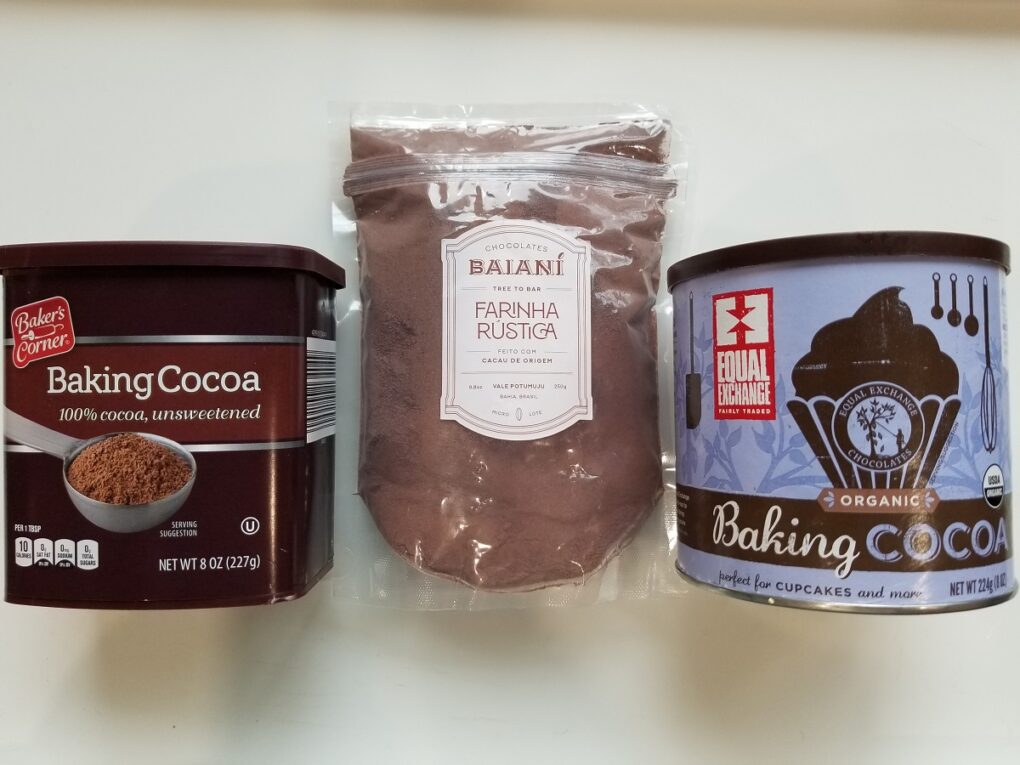
Role of Cocoa Powder in Baking
The outcome of your baked goods may vary depending on the variety of cocoa powder you use. Most recipes call for either dutch-processed cocoa powder or natural unsweetened cocoa powder.
Dutch-processed cocoa powder offers a dark color and intense chocolate taste to recipes. Natural cocoa powder’s higher acidity lends a slightly fruitier and more dynamic flavor.
It also means that if the recipe calls for baking soda, to avoid an overly leavened chocolate cake, you may want to slightly decrease the amount of leavening agent. Baking chocolate cakes or any style of cake with cocoa powder makes it taste extra chocolatey and cakey.
This is because most of the cocoa butter is removed from cocoa powder, and with the lack of fat, it makes for lighter sponge cakes while still adding that rich chocolatey flavor. Opting to add the cocoa powder or cocoa powder alternative directly to your dry ingredients in a recipe will improve the structure and texture of your baked goods.
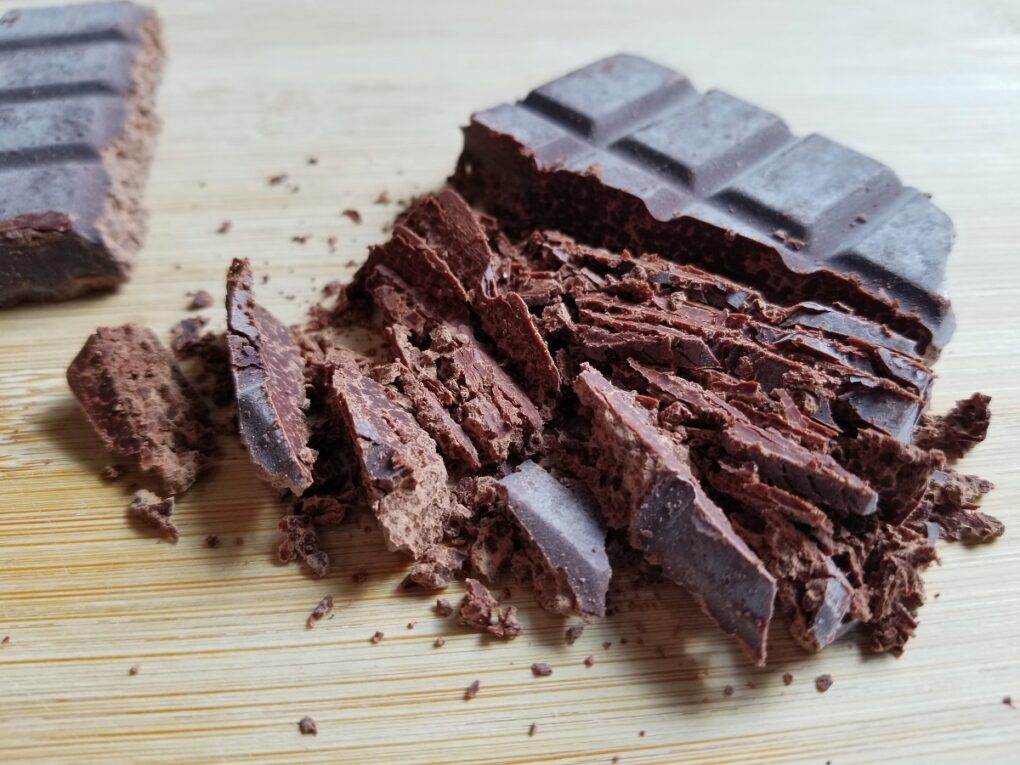
What Can I Use Instead of Cocoa Powder?
We know that there is a difference between natural and dutch-processed cocoa powders. They can be used interchangeably in most recipes, but when baking, you may need to tweak the leavening.
When you don’t have any, go for one of these easy cocoa powder alternatives listed below. You may even have some of these in your pantry already, and can skip the trip to the store altogether.
However, keep in mind that you may not achieve the same texture or flavor with some of these, so read carefully. As always, do your best to determine which would work best to replicate the flavors and textures needed.
Baking Chocolate (Unsweetened Chocolate)
Baking chocolate or unsweetened chocolate is 100% chocolate liquor or cacao paste. Known by a bevy of names, including— but not limited to— cacao liquor, cacao mass, tableya, cocoa liquor, cocoa mass, and even just “chocolate.”
But whatever you call it, this liquid is made from cacao beans (also called cocoa beans or cocoa nibs), and it contains both cocoa solids & cocoa butter in roughly equal measure. Unsweetened chocolate is generally used in baking as well as to make desserts, and is one of the best substitutes for cocoa powder.
With its higher percentage of cocoa solids, baking chocolate offers itself as the simplest and best substitute for cacao powder. The flavor can be quite bitter when made with lower-quality cacao, and it can still be used to achieve a dark & richer color in baked goods and desserts.
How Much to Use: Use four tablespoons of unsweetened baking chocolate for every three tablespoons of cocoa powder called for in a recipe. To make the swap, before adding the chocolate to your wet ingredients, melt it until fully liquid.
Additionally, because chocolate contains more fat than cocoa powder, reduce the amount of fat used in your recipe by 2 tablespoons per every 4 tablespoons of chocolate used.
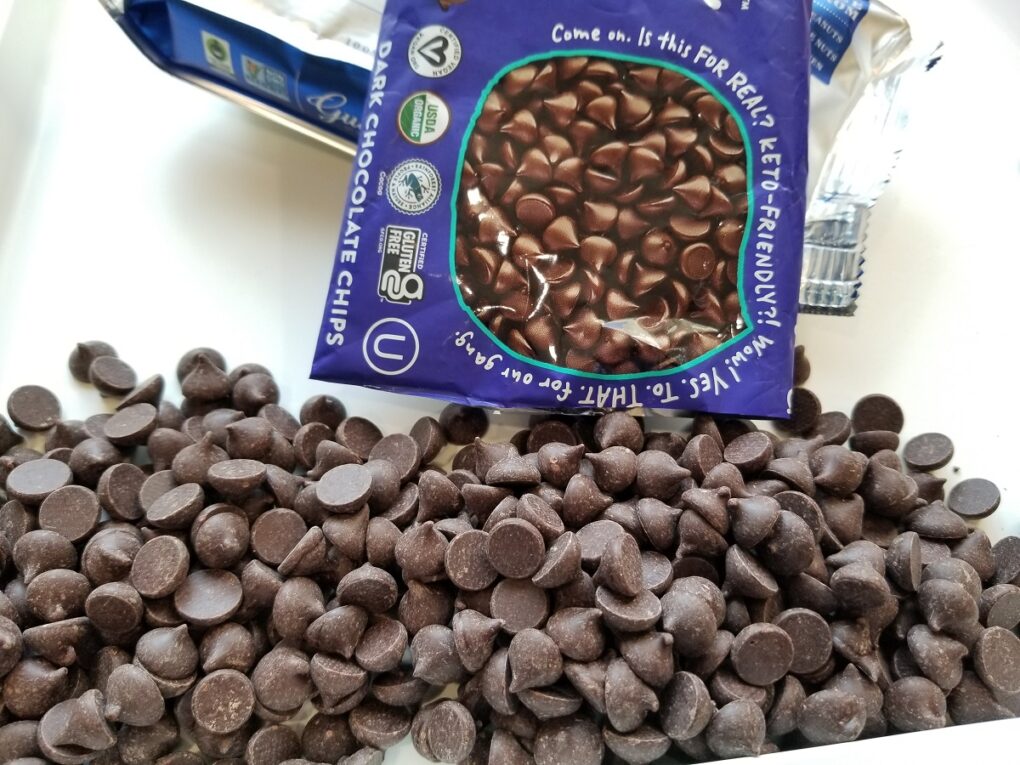
Chocolate Chips
Baking chocolate may not be the best option if you want to add cocoa powder for a milder and sweeter flavor in your recipes. We look to chocolate chips as a replacement for cacao powder because they tend to be sweeter than baking chocolate, made up of up to half sugar.
Chocolate chips are small round morsels or chunks of sweetened chocolate, widely used in baking. They’re made by carefully refining cacao with sugar, lecithin, and sometimes milk, extra cocoa butter, and vanilla. If you’ve run out of cocoa powder, a simple substitute would be chocolate chips; the higher the cacao percentage, the better.
Just like with baking chocolate, the chocolate chips will have to be melted before being added to the recipe. Remember that chocolate chips contain less cocoa butter and stabilizers to help them maintain their "chip" shape while baking.
Semi-sweet or milk chocolate chips contain more sugar than bittersweet chocolate chips. If this is all you have on hand, you can compensate for this by reducing the amount of sugar or other sweeteners you add. It's also a good idea to slightly reduce the butter or shortening to compensate for any cocoa butter in the chocolate.
How Much to Use: 2-3 ounces of chocolate chips (depending on sugar content) as a swap for 1.5 ounces of cocoa powder, but just remember to compensate for the extra fat.

Cacao Nibs (Cocoa Nibs)
While less common than the above-mentioned cocoa powder alternatives, cacao nibs are the full-fat, less-processed version of cocoa powder. They're the raw material from which cacao butter is pressed, and then cacao powder is made by grinding it into the fine dust we all know and love.
How Much to Use: to substitute cacao powder with cacao nibs, they must be lightly baked in the oven for about 5 minutes at 200°F (95°C). Then add the warm nibs to a strong blender or food processor and grind them in 2-second pulses for about 1 minute.
The mixture will be very thick, like a cacao paste, and can be used in brownies, cakes, and frostings, though it won't have the same texture. Swap this rough grind for cocoa powder in a 1-to-1 ratio.
Dark Chocolate Bar
One of the easiest-to-find cocoa powder replacements is a dark chocolate bar. Dark chocolate has a higher cocoa content than other types, making it the closest in chocolate richness to cocoa powder.
Dark chocolate, like cocoa powder, is rich and often bitter, made from pure cocoa + sugar. It also has a lovely dark color that will keep your chocolate desserts look stunning. Check for higher cocoa percentages printed on the front label of your dark chocolate bar.
A higher cocoa percentage indicates a higher ratio of cacao to sugar, and a higher proportion of cocoa solids. The higher the percentage, the more comparable it will be to cocoa powder. If your recipe relies on the bitterness of cocoa powder, dark chocolate is an excellent alternative.
How Much to Use to use dark chocolate candy bars, melt the chocolate and measure out four tablespoons of liquid chocolate to replace three tablespoons of cocoa powder. Just remember to compensate for the extra fat; check the nutrition label on the back to figure it out.
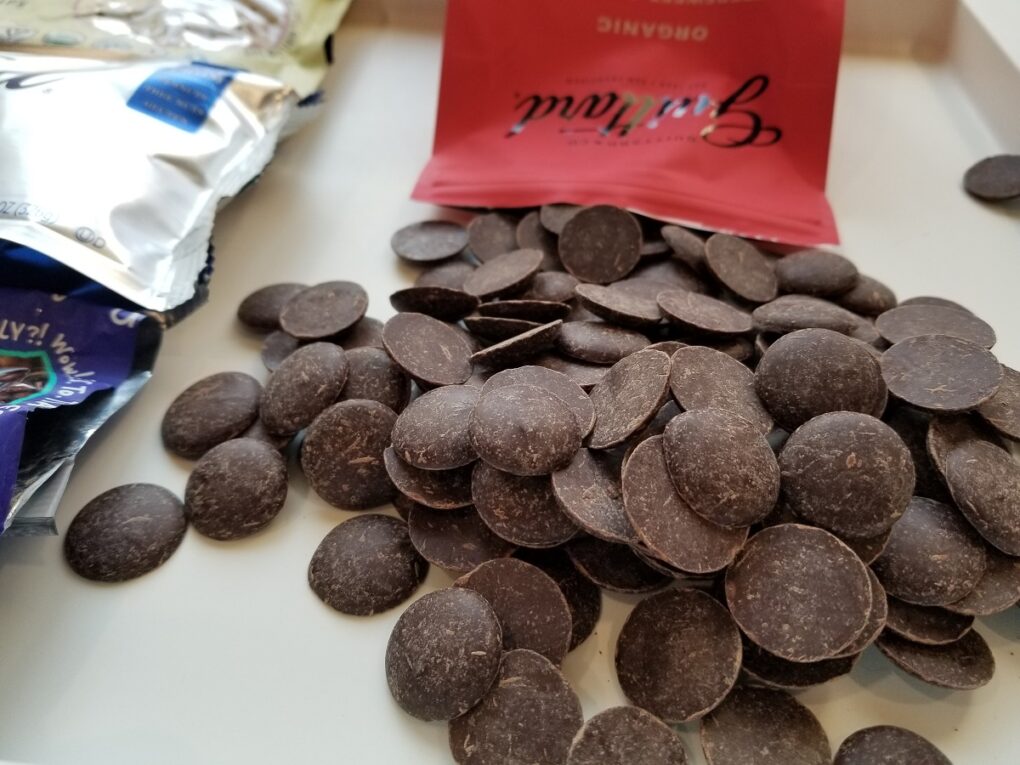
Couverture (Melting Chocolate)
If you make candies or dipping chocolate, you may be familiar with couverture chocolate. Also known as simply 'couverture,' this type of chocolate contains more cocoa butter than other types. It's most commonly found in the production of professional chocolate bars, barks, candy, brownies, and cakes, as the extra fat makes it easier to work with.
Couverture chocolate contains a higher percentage of cocoa butter. This makes it extra smooth and creamy, making it perfect for dipping. While not an ideal substitute for cocoa powder, it will suffice in a pinch. The resulting creations will be sweeter, darker, and have a slightly different texture, as well as a prominent chocolate flavor.
How Much to Use it's simple to swap couverture chocolate for cocoa powder. Simply melt the couverture and use the appropriate amount in your recipe.
Once the chocolate has melted, substitute four tablespoons for every three tablespoons of cocoa powder called-for. Just remember to adjust the amount of fat in the recipeas couverture chocolate has even more fat than other types.

Drinking Chocolate Powder
Chocolate drinking powder, for the most part, will be mostly made up of chocolate in a rough grind. Commercial types are typically dutch-processed to be more soluble, and use higher-fat cacaos to produce a rich and flavorful mixture of chocolate, vanilla, and sugar.
How Much to Use: drinking chocolate powder makes for the best cocoa substitute when baking brownies, cakes, cookies, and other desserts. You can start at a one-to-one ratio, but since it contains sugar, you'll likely want to reduce the amount of sugar you use in the recipe.
The sweetness of drinking chocolates varies greatly. A drinking chocolate mix with a higher cocoa percentage will typically be less sweet than one with a lower percentage, and would make for a better replacement for cacao powder.
If your drinking chocolate doesn't say the percentage, check the packaging and nutritional information to see how much sugar was added per serving, then calculate from there. Remember that adding more sweetener to your recipe is always simple, so consider starting with less.
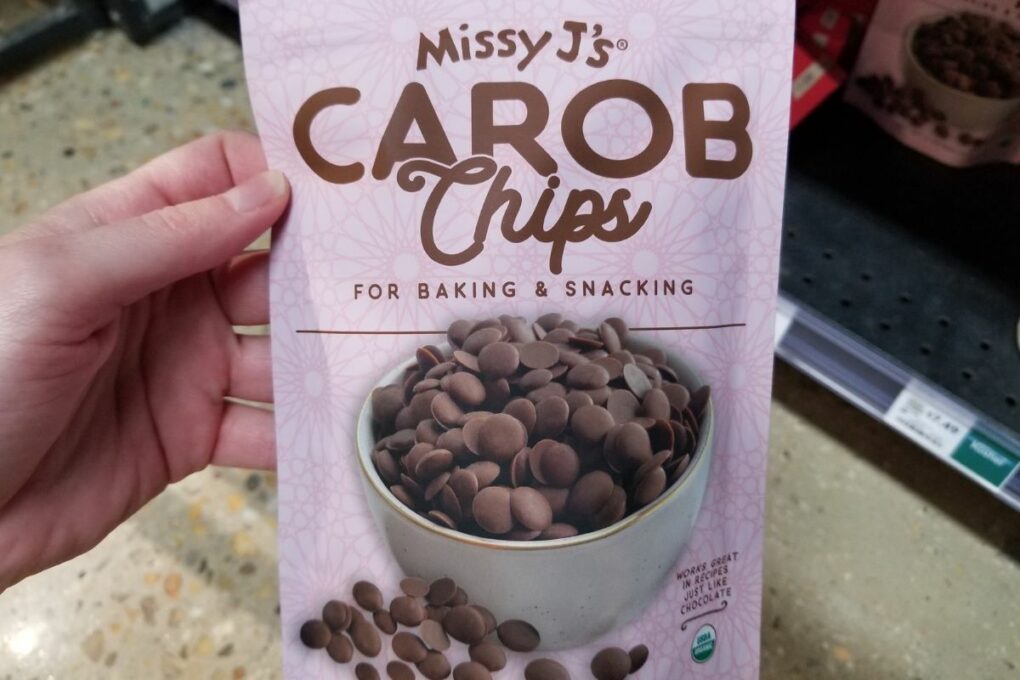
Carob Powder
When you run out of cocoa powder but still want to make a chocolate cake, you have several options, including a non-chocolate alternative like carob powder. Carob powder, also known as carob flour, is a common cocoa powder alternative.
Carob powder resembles cocoa powder, but is prepared from dried, roasted carob tree pods, which come from a tree native to the Mediterranean. The powder is available in both raw and roasted forms; the lightly-roasted powder has a sweeter flavor than the dark-roasted powder, which has a more bitter, intense flavor.
In baked goods, carob powder is frequently used as a natural sweetener. It's distinctly earthy while also mildly bitter, sweet, and nutty. While carob powder has almost no fat, it has more sugar and carbohydrates than cocoa powder, but is similarly high in dietary fiber and antioxidant polyphenols.
How Much to Use: when using carob powder to substitute for cocoa powder in baking, it needs to be in a recipe where you need a sweet chocolate flavor. Use it as a 1:1 replacement for cocoa powder; however, you may need to lessen the sweetener in your recipe to offset it. If you have extra, carob makes for an excellent addition to foods like pancakes, oatmeal, and milkshakes.
Chocolate Spread (NOT Nutella)
While you can't make this swap with nutella (its first 3 ingredients are sugar, palm oil, and hazelnuts!), any high-quality chocolate spread can be used as long as its first or second ingredient is cocoa powder. The other top ingredient should be a nut or sweetener of some kind.
How Much to Use: this swap can be used in any batter, fudge, or frosting, but you'll need to offset either the sugar or the sugar & nuts/oils added. Usually this means swapping chocolate spread for cocoa powder in a 2:1 or 3:1 ratio, checking the nutrition facts of your particular chocolate spread to see how much of it is sugar.
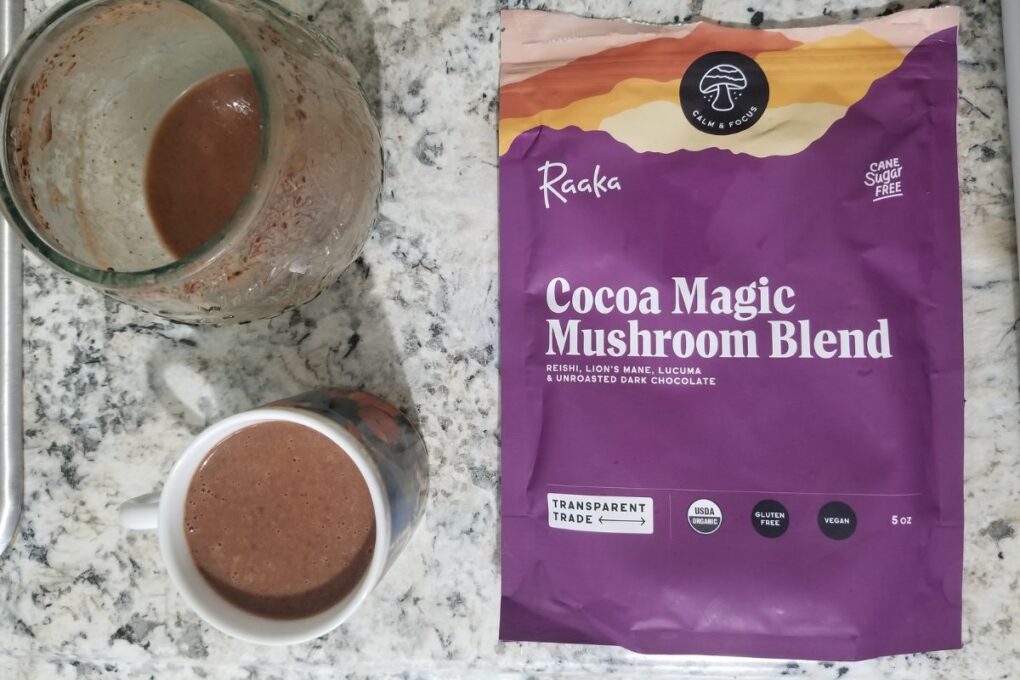
Hot Cocoa Mix (Hot Chocolate Mix)
A good quality hot cocoa mix can often substitute cocoa powder when you’re in a pinch. One wonderful thing about higher cocoa content products is their flexibility in allowing you to alter the taste by adding more sugar or milk if you find it too intense, but too much sugar is hard to take out.
Just as its name suggests, hot cocoa (or hot chocolate) has cocoa powder in it. However, it only has a small amount of cocoa powder and has many other ingredients like sugar, milk, and other additives. Hot cocoa mix is chocolatey powder usually made with very little cocoa, more milk powder, sugar, and hydrogenated oils than the cocoa powder we’re swapping out.
How Much to Use: to get enough of the chocolate flavor (and it will likely not be a rich enough one), you need to use hot cocoa mix in a 2:1 substitution for cocoa powder.
You'll be adding less cocoa powder to your recipe, as well as the addition of whatever else may be in the cocoa mix (like a ton of sugar), so start by adding half of what you need and adjusting from there.

Frequently Asked Questions
No, cocoa powder is not the same as chocolate powder. Cocoa powder is made from pure cocoa solids that have been processed to remove the cocoa butter, while chocolate powder is made from finely-ground whole cacao beans combined with sugar and other ingredients.
No, more flour cannot be used as a replacement for cocoa powder because they have different properties and functions in baking. Cocoa powder provides flavor and color, while flour provides structure and texture.
Yes, hot chocolate mix can be used as a substitute for cocoa powder, but you'll need to adjustment the amount to account for the added sugar and other ingredients in the mix.
Chocolate may be used as a substitute for cocoa powder, but adjustments need to be made to account for the added fat and sugar in the chocolate. See my post on swapping chocolate for cocoa powder for more details.
Cocoa powder is made by grinding cocoa beans into a fine powder and pressing out the cocoa butter, generally a process done by specific machinery.
📖 Recipe
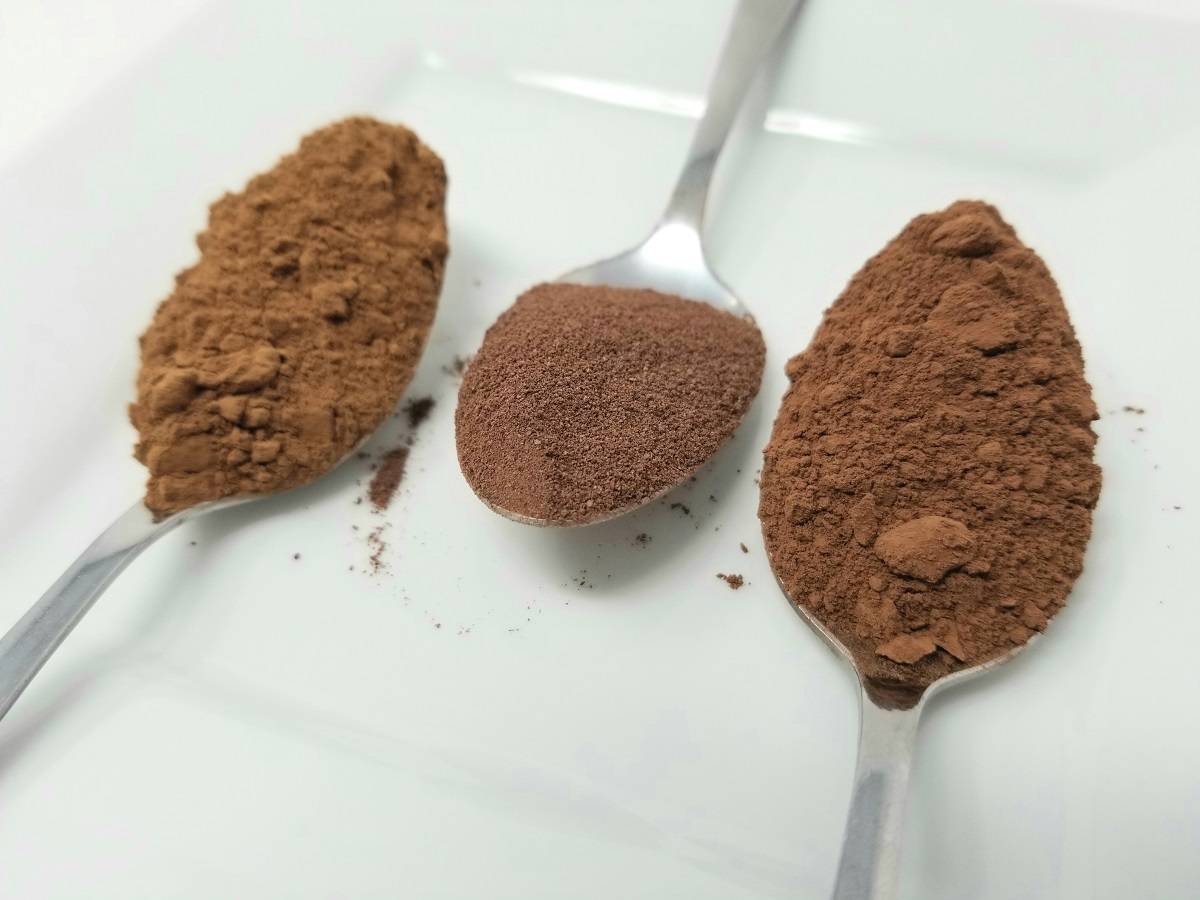
BEST Cocoa Powder Substitute (11 Options Tested)
Ingredients
Best Cocoa Powder Substitute:
- Cacao Powder
Second-Best Cocoa Powder Substitute
- Dutch-Processed Cocoa Powder
Reasonable Cocoa Powder Substitute:
- Baking Chocolate Unsweetened Chocolate - use ½ tablespoon less fat for every tablespoon used
Instructions
- Directly swap out your chosen cocoa substitute at the step in your recipe during which you're supposed to add the cocoa powder; see notes for indirect cocoa powder substitutes.
Notes
- Chocolate Chips
- Cacao Nibs (Cocoa Nibs)
- Dark Chocolate Bar
- Couverture (Melting Chocolate)
- Drinking Chocolate Powder
- Carob Powder
- Chocolate Spread (NOT Nutella)
- Hot Cocoa Mix (Hot Chocolate Mix)














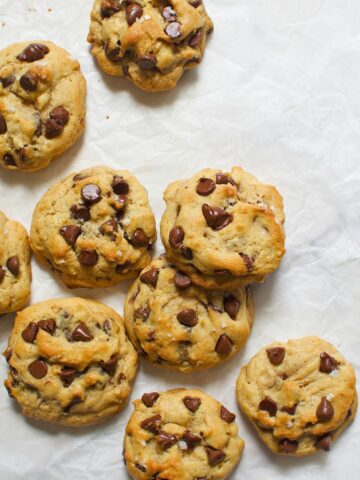

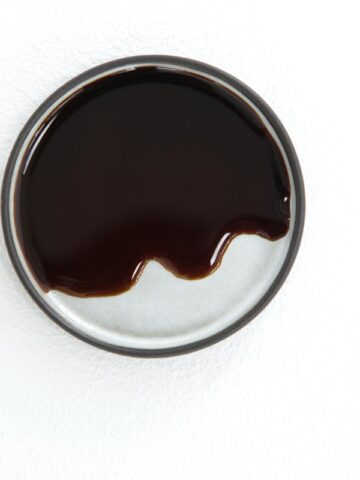
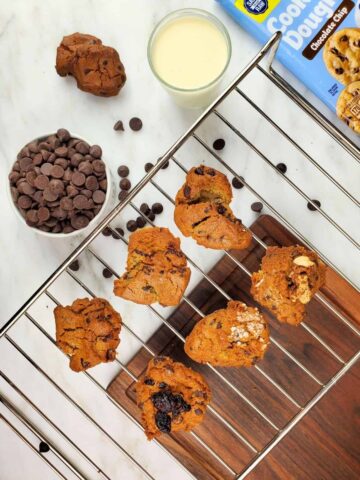
Tracy Ross
I'm wondering if anyone has tried the Pascha 85% chocolate chips. I would love to use them in baking as well as snacking if they are good.
Thanks!
Max
I personally love them (surprisingly mild flavor!), but would love to hear others' thoughts, as well!